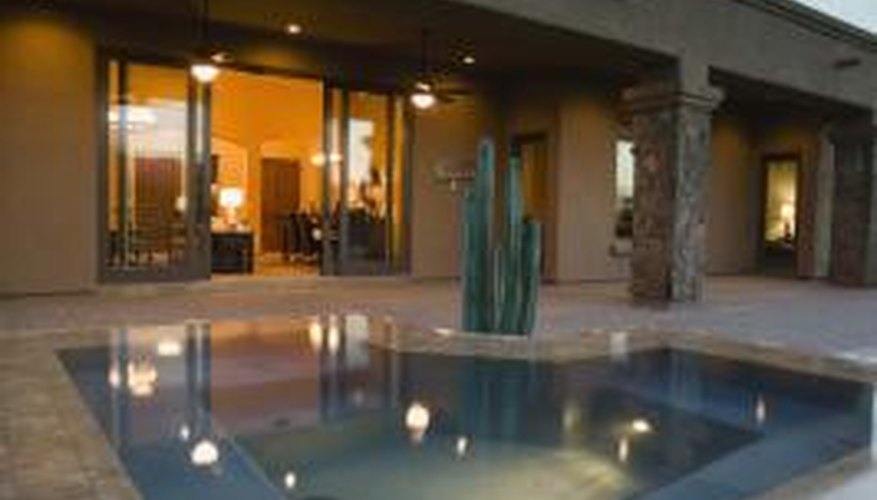Just like a swimming pool, a hot tub's water needs to be sanitised to be safe for use. As with swimming pools, hot tub sanitiser levels should be within a prescribed parts per million (ppm) range. Chlorine levels in a hot tub's water should be between 1 and 3 ppm. Hot tub chlorine levels above 5 ppm will start causing users problems, including skin irritation. Ten ppm of chlorine in a hot tub is too high, making the tub unsafe for users.
Tub Chlorine
Very little chlorine is actually required in a hot tub to raise levels to between 1 and 3 ppm. Typically, when using granular sodium dichlor, only a tbsp is necessary to sanitise the average 300-gallon hot tub sufficiently. Dichlor is the recommended chlorine type for use in hot tubs because it's stable in hot water and is also nearly pH-neutral. If you grab a cup and just dump dichlor chlorine into a hot tub, though, you're creating definite chemical problems.
- Very little chlorine is actually required in a hot tub to raise levels to between 1 and 3 ppm.
- Typically, when using granular sodium dichlor, only a tbsp is necessary to sanitise the average 300-gallon hot tub sufficiently.
Unsafe Levels
Chlorine is a very potent chemical disinfectant and is also classified as a hazardous material. In pools and hot tubs with chlorine levels at about 5.5 ppm, users will begin to experience eye, skin and mucus membrane irritation. In indoor hot tubs, a 5.5 ppm level of chlorine will also begin creating chlorine odours that can be noxious to people sensitive to chlorine. Hot tubs with 10 ppm chlorine levels are unsafe, and chlorine should never be used until those levels are dropped appreciably.
- Chlorine is a very potent chemical disinfectant and is also classified as a hazardous material.
- Hot tubs with 10 ppm chlorine levels are unsafe, and chlorine should never be used until those levels are dropped appreciably.
Lowering Chlorine
If you have a hot tub with a 10 ppm chlorine level, you'll need to reduce that chlorine level back down to 3 ppm or lower before using the tub. You can lower chlorine chemically by adding sodium thiosulfate to the water. Sodium thiosulfate is a well-working chlorine neutraliser, and about 45.4gr. of it in a 300-gallon hot tub can lower chlorine from 10 to 2 ppm. Reducing hot tub chlorine levels also means addressing other chemistry balances though.
- If you have a hot tub with a 10 ppm chlorine level, you'll need to reduce that chlorine level back down to 3 ppm or lower before using the tub.
- of it in a 300-gallon hot tub can lower chlorine from 10 to 2 ppm.
Chemistry Balances
Hot tubs with 10 ppm or greater chlorine levels will also have pH levels exceeding 7.8. For chlorine in a hot tub to be effective, pH should be between 7.2 and 7.8, with 7.4 to 7.6 ideal. The pH in pools and hot tubs is lowered using muriatic acid (MA), which is known in hot tub stores as "pH decreaser." In a 300-gallon hot tub, only about a capful of MA will effectively lower pH.
- Hot tubs with 10 ppm or greater chlorine levels will also have pH levels exceeding 7.8.
- The pH in pools and hot tubs is lowered using muriatic acid (MA), which is known in hot tub stores as "pH decreaser."
Considerations
A small amount of any single chemical added to a hot tub can throw off its water chemistry, so use all chemicals in their correct amounts. If chlorine levels in a hot tub keep rising, reduce the frequency of chlorination first of all. Also check hot tub chlorine and pH levels three to four times a week, and adjust as necessary. If hot tub water chemistry can't be balanced, you should drain it, clean it and refill it with fresh water.
- A small amount of any single chemical added to a hot tub can throw off its water chemistry, so use all chemicals in their correct amounts.
